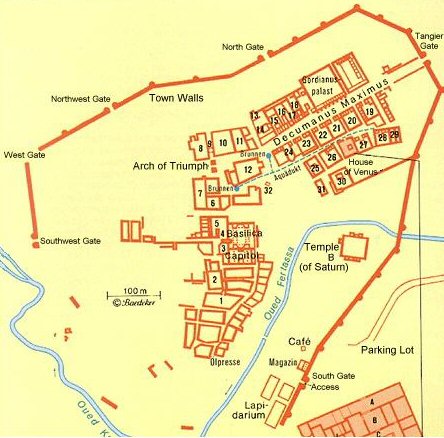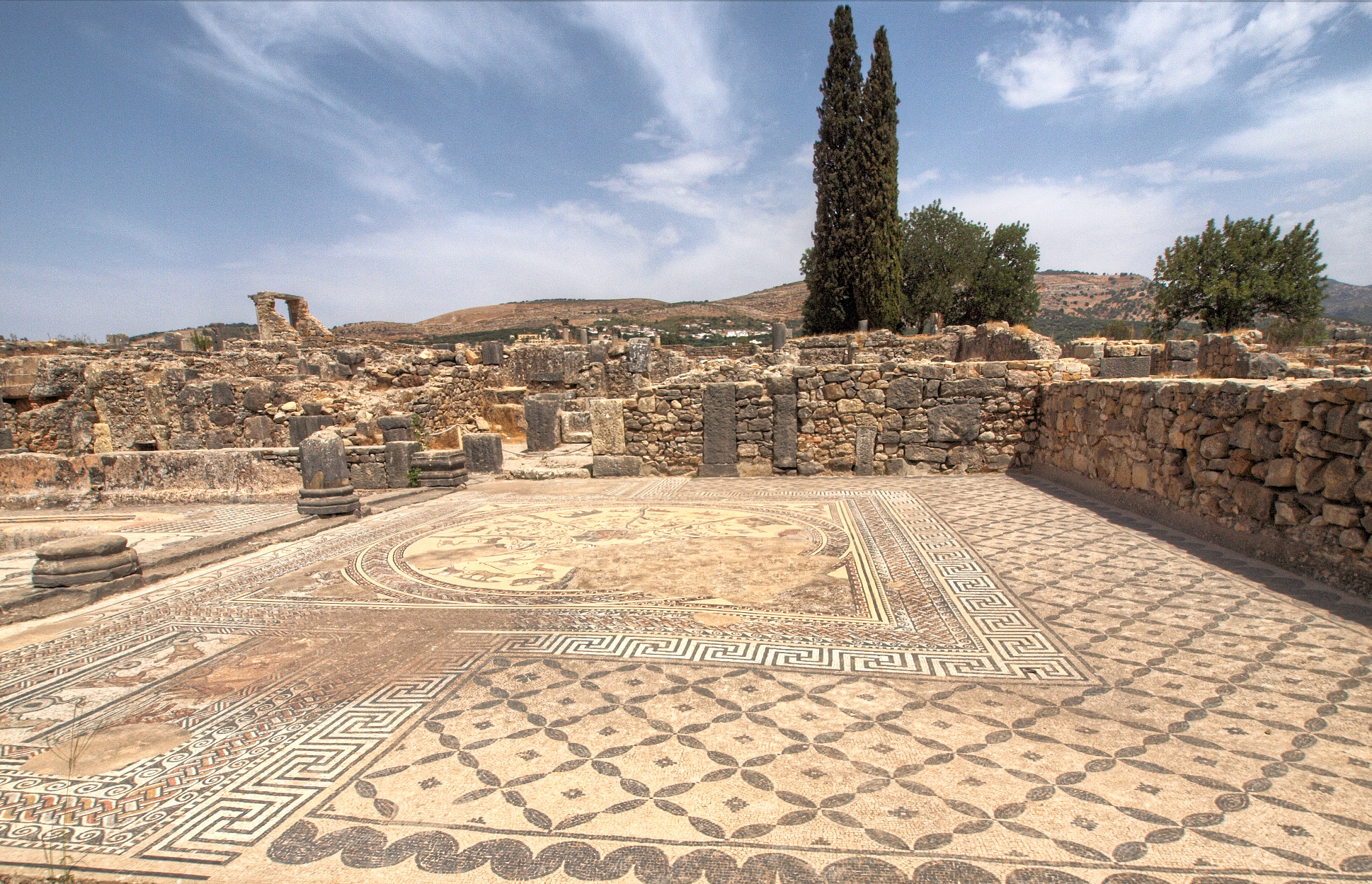Volubilis (Berber: Walili, Arabic: وليلي) is a partly excavated Berber and Roman city in Morocco situated near Meknas between Fas and Eṛṛbaṭ and commonly considered as the ancient capital of the kingdom of Mauretania.[1] Built in a fertile agricultural area, it developed from the 3rd century BC onward as an Amazigh, then proto-Carthaginian, settlement before being the capital of the kingdom of Mauretania. It grew rapidly under Roman rule from the 1st century AD onward and expanded to cover about 42 hectares (100 acres) with a 2.6 km (1.6 mi) circuit of walls. The city gained a number of major public buildings in the 2nd century, including a basilica, temple and triumphal arch. Its prosperity, which was derived principally from olive growing, prompted the construction of many fine town-houses with large mosaic floors.
The town fell to local tribes around 285 and was never retaken by Rome because of its remoteness and indefensibility on the south-western border of the Roman Empire. It continued to be inhabited for at least another 700 years, first as a Latinised Christian community, then as an early Islamic settlement. In the late 8th century it became the seat of Idris ibn Abdallah, the founder of the Idrisid dynasty and the state of Morocco. By the 11th century Volubilis had been abandoned after the seat of power was relocated to Fes. Much of the local population was transferred to the new town of Moulay Idriss Zerhoun, about 5 km (3.1 mi) from Volubilis.
The ruins remained substantially intact until they were devastated by an earthquake in the mid-18th century and subsequently looted by Moroccan rulers seeking stone for building Meknes. It was not until the latter part of the 19th century that the site was definitively identified as that of the ancient city of Volubilis. During and after the period of French rule over Morocco, about half of the site was excavated, revealing many fine mosaics, and some of the more prominent public buildings and high-status houses were restored or reconstructed. Today it is a UNESCO World Heritage Site, listed for being "an exceptionally well preserved example of a large Roman colonial town on the fringes of the Empire".
Volubilis in Map
A good map and a good guide for Volubilis city :

(1) House of Orpheus, (2) Public Baths, Capitol, Basilica, (3) Forum Baths, (4) Macellum, (5) Forum, (6) House of the Athlete, (7) House of the Dogs, Triumphal Arch, (8) House of the Ephebus, (10) House of Columns, (11) Knight's House, (12) North , Baths, (14) Labors of Hercules, (17) Nymphs Bathing, Gordian Palace, House of Venus, Open-air Museum, Oil Presses, Southwest, Gate, West Gate, Northwest Gate, North Gate, Tangier Gate, Entrance, Cafe,
Although less than half of Volubilis has been excavated to date, from the online maps images I've seen of Volubilis, it looks like it's a pretty sizable site. We definitely will need to buy a map to help identify what we see. It may also be a good idea to splurge on a guide as well. Always helps to have someone explain things to you.
My plan is for us to go to Volubilis from Meknes. From what I've read, the best thing to do is to hire a grand taxi for a round trip ride so that will be the game plan. I think it will be our first try at hiring a grand taxi so that should be an interesting experience!
Enjoy with pictures :








